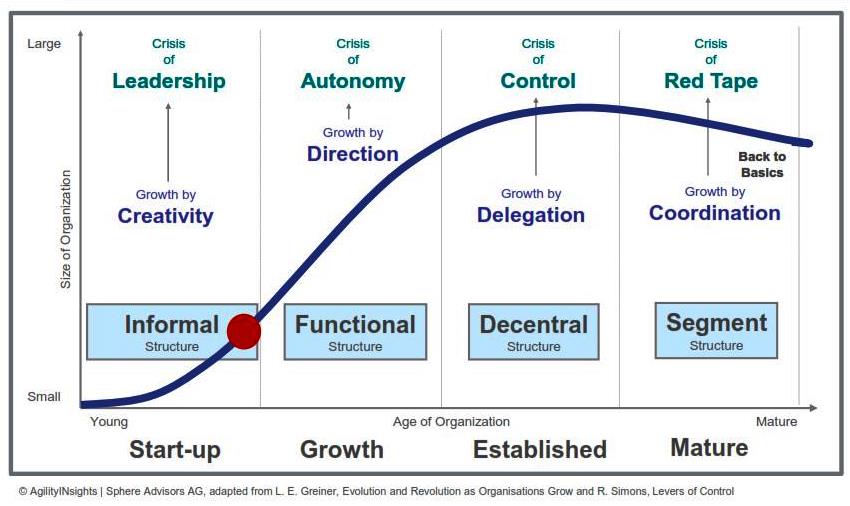Of course we don’t plan for death – we just expect it. It’s a natural consequence of being human. We don’t plan for death in our businesses either, but neither do we expect it. Businesses are not human. Although they are run by humans and have a lot of organic qualities. The usual model for businesses is shown in the graphic.
There is an implication shown by the downward sloping line that a mature business deteriorates over time. But we don’t take the next logical step and assume that it might die. We know that businesses do die very regularly. Start-ups have a very low survival rate in the first five years, and those dependent on an individual or one product line have obvious risks. Also when the economy is suffering, more businesses fail. But we don’t plan for this. We plan for success.
This is possibly a function of the optimistic entrepreneurial mindset that is necessary to start and run a business. That needs tempering by good information to check decisions, but we shouldn’t wish to rein it in because that would cause the very problem that we seek to avoid – too fearful an attitude can be equally as risky as being too gung-ho.
But we do assume in our short-term way that businesses will continue, even though we have not got a plan of its life-cycle, either in product life-cycle terms, or in terms of its people. We just assume.
We also sometimes confuse the chronological time a business has been in existence with its stage of business. We have frequently seen a business has been in existence for 10, 20, or even 30 years, but in terms of its structure and leadership it is still in a start-up phase. Very few small businesses have got to the established stage where their growth is through a delegated structure. They haven’t grown the business to a size where they can take advantage of other people’s dynamism, experiences, and energy – it’s still all very much driven by the original owners. If the owners are getting close to retirement whilst their business is still in the start-up phase, it is more difficult to achieve the best possible price for them when they come to sell. It needs to have moved at least up to the functional phase where it can be clearly demonstrated to a potential seller that it can run without the original owners. This mismatch between the age of the owners and the functional age of the business can lead to that shape in the graphic being compressed into the start-up element such that decline starts before it gets into any other phase.
It’s difficult for owners, having run their business successfully for many years, to have to get to grips with new concepts of working so that they can get their best value on sale. We find that aligning personal and business objectives gives a good basis for reviewing the structure and particularly the team. This frequently leads to better engagement and then an ability to demonstrate that the business can be run without the owners, such that a decent retirement can be predicted.
Assuming that the owners don’t want to retire, the business still needs to be put into a position where an organic consideration of its true life-cycle can be planned. In our family life, we expect to grow from childhood to adulthood, reproduce (here’s the sex), nurture our children to adulthood, before we eventually die. It’s not difficult to use that analogy for the business. Businesses should reinvent themselves regularly and in this century, have to be more agile and flexible, or they are at risk of premature death. So perhaps consider new developments as the children of the business. Nurture and grow them, and allow old practices and old products to die a natural death. Stop putting resource and effort into areas which are having a diminishing return.
We look at life cycles regularly with our clients. Both product and service life cycles, where the owners are in their life and what their hopes are. And we look at where the business is in its life, so it is well designed to maximise benefits to owners and ensure sustainability, agility, so that personal and business lives are well lived.

